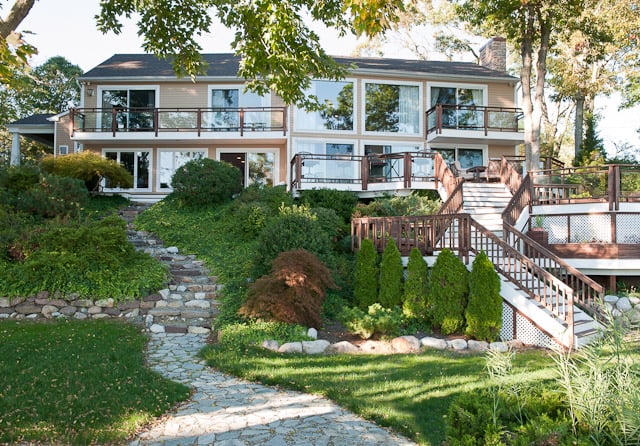
People often refer to any window that is not stained as a plate glass window. The truth is most modern plate glass windows are not plate glass at all. Though the materials that go into almost every type of glass are very similar, the processes by which various types of glass are manufactured are different.
Old Plate Glass Windows
Plate glass was truly the industry standard between the 1920s and the 1960s. If your home was built before 1920 or after 1960, what you might think is a plate glass window could quite easily be made of a different kind of glass.
Is this information pertinent to the average homeowner? Possibly. Plate glass that was made before 1920 was practically hand-crafted. It was valuable then, and it is valuable now as well. The product that was replaced by plate glass’s industrialization, called sheet glass, is also a rarity these days. Knowing what kind of glass is in your home is pertinent for those who want to preserve a bit of history and could mean the difference between replacing old windows with new ones or simply using other techniques to insulate the originals.
Plate Glass vs. Float Glass
A process that uses molten tin to create the surface of a glass sheet was developed in the late 1950s. The glass, in liquid form, was poured onto the tin causing the lighter glass to float. The resulting product, “float glass,” had an extraordinarily smooth surface and required much less sanding than products made using earlier techniques. Today, glass for commercial use is almost entirely float glass, and plate glass is used only in very rare cases.
Float glass is less expensive to produce than machine-made plate glass. It also has fewer irregularities. There is little room left to wonder at how easy it overtook plate glass as the favored material to use in new construction.
Insulating Plate Glass Windows
Plate glass, like most other glass used in buildings, is not that great of an insulator. The rate at which it allows heat to pass through is basically dependent only on its thickness. If you have old windows, but would rather keep them than replace them, there are a few things you can do to insulate the space around them (and save a few bucks on heating and cooling costs in the process).
Probably the fastest and easiest way to hinder heat transfer is to add another layer of protection. A set of thick drapes or tight blinds installed over an old window will create an air buffer, making it more energy efficient. Installing storm windows is another effective way to create an additional layer of protection and insulation.
You can also refurbish the frame of the old window and fill in gaps along the way. Loose glass can be stabilized in the frame using putty. Examine the frame and look for any places where air could seep through. The seam between the wall and the window trim is often a problem area that can be filled with caulk. After a bit of weatherproofing, you may find that the frame, not the glass, was the bigger culprit in heat transfer.
 Pros, Cons, and Costs: Double-Paned Windows
Pros, Cons, and Costs: Double-Paned Windows  Casement Windows Pros and Cons
Casement Windows Pros and Cons  Take Care of Your Screens and Keep the Bugs Out
Take Care of Your Screens and Keep the Bugs Out  “Green” Interior & Exterior Windows
“Green” Interior & Exterior Windows  Low-e Windows – Are They Worth the Investment?
Low-e Windows – Are They Worth the Investment? 

I have an old farmhouse in Michigan’s Upper Peninsula. I replaced most of the smaller windows with vinyl replacement windows. However I am leaving the old play class front window because of the beauty of the glass. I am also saving the Sash and pain of a side plate glass window again because of the character of the glass. I hope to hire an artist to paint a mural on it and hang it in the house.